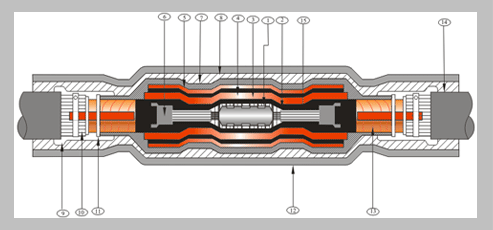
Electrical power has several uses and hence there are several varieties of the power cables. Power cables are responsible for carrying electricity over distances and for different applications. In this context, the question arises how to join these electric cables if electricity has to be carried over long distances.
The solution comes in the form of cable joints which helps to maintain the power cable’s continuity especially in situations where long lengths are required. The cable joints have to be compatible with respect to insulation, conductivity, crushing and tensile strengths of the power cable itself. The cable joints also come in many varieties to tackle the needs of each application.
Following are some factors on which cable joints differ from one another and accordingly the jointing systems have to be chosen so that they suit the required needs.
Factors differentiating cable joints
Voltage
Different cable joints should be made use of for differing capacities of electrical cables. A cable joint with a low voltage cannot be applied to a cable with a higher capacity as it will not be able to withstand the high electric current.
Structure
Cable joints differ in their structure depending upon the manner in which the two cables are to be joined. Sometimes, two power cables are connected at one point by the cable joints while at other times a cable branch joint is used to accommodate the branching off of a cable or including one into the main line.
Insulation
Cable joints have to also be compatible with the insulation of the electric cables on which they will be used. The polymeric insulation on the cables varies and accordingly the cable joint varies.
Cores
There can be a single or several insulated cores for the power cables. In this context, compatibility needs to exist between the cores of the power cable and that of the cable joint which will be used as otherwise it will fail to function.
Most of the popularly used cable jointing systems are heat shrinkage, pre-molded cold application and taped type ones. Among them different joints such as the transition joint, branch joint and PILC joint perform specific functions while joining two or more cables. Transition joint helps in joining dissimilar metal piping constituents which otherwise cannot be welded to each other. This is a non-separable, prefabricated and metallurgically bonded joint and is typically useful in field butt welding of aluminum to stainless steel in the cryogenic industry. Quality cable joints are always characterized by flawless performance, dimensional accuracy, longer functional life and greater operational efficiency.
Tips to keep in mind
However, while dealing with any issue of handling of electricity there are two aspects to be kept in mind. Firstly, it is always better to consult a technician rather than tinkering with the task yourself. The technicians are fully knowledgeable on these aspects and their working on the concerned task ensures that no casualty takes place. Another aspect to be remembered is to buy the jointing systems from reputable manufacturers as their products are of superior quality and meet international standards. You can also get customized jointing products that will fulfill the needs of each client.